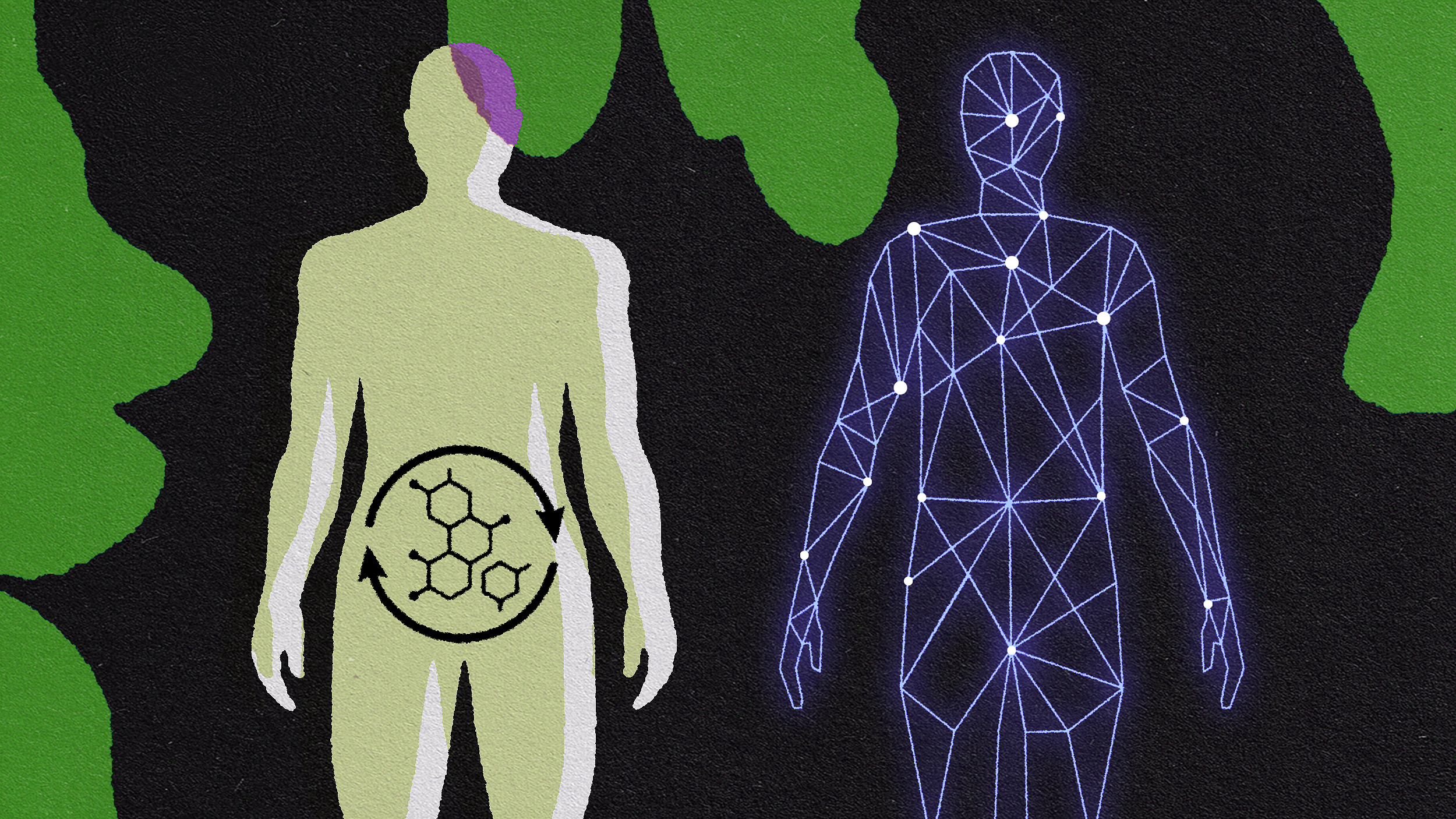How do you define sexual desire? It’s often thought of as a sparky force that strikes people spontaneously, such as when they catch a glimpse of someone whom they find attractive.
But that’s only one kind of desire. As sex educator Emily Nagoski tells Big Think, there’s also responsive desire, which is the desire we feel as a reaction to sexual stimuli, like touch and physical closeness.
As Nagoski explains, a better understanding of responsive desire can help improve the quality of long-term relationships, particularly by helping people realize that they don’t need to feel constant pressure to keep the sexual “spark” alive through spontaneous desire alone.
Purchase The Come as You Are Workbook here, and subscribe to Emily Nagoski’s newsletter here.
EMILY NAGOSKI: Virtually everything we are taught about sexuality for the first two decades of our lives is wrong. A lot of us were raised in what I started calling the "desire imperative," that you have an obligation to experience spontaneous, sparky desire for your partner, and to sustain spontaneous, sparky desire for your partner all the time. And so there's a lot of advice about, "How to keep the spark alive." And what I wanna say is screw the spark. So, how most of us think about sexual desire is as a 'spontaneous desire' where you're just like walking down the street, you have as stray sexy thought. You see a stray sexy person- kaboom! You just, you just want the sex! And that absolutely is one of the normal healthy ways to experience sexual desire, spontaneous desire. It emerges in anticipation of pleasure, but there's also 'responsive desire,' where instead of it just appearing like a lightning bolt, it emerges in response to pleasure. Just that information alone can resolve people's sexual desire problems because they realize they don't have a desire problem, they just have responsive desire. So it's not about figuring out where the pleasure is, it's finding a pathway to the pleasure.
I'm Emily Nagoski. I'm a sex educator, and I'm the author of "Come as You Are: The Surprising New Science that Will Transform Your Sex Life." And like, it actually does. Boom mics are really funny when you're talking about sex. Just the boom mic was moving and I'm talking about sex, and I'm in that mindset, and it's funny to me.
So, the history of the science of sex therapy really has three major phases: The first is grounded in the work of Masters and Johnson, whose fundamental Four-Phase Model of Sexual Response was what sex therapy was based on. But when you listen to those phases, you've got arousal, plateau, orgasm, refractory period- you know what's missing in that? Desire. So, when Helen Singer Kaplan came along in the 1970s, she noticed that desire was nowhere in the model they were using to treat sexuality. So she created the Desire, Arousal, Orgasm Model, the Triphasic Model, and it was revolutionary to add desire, so now we can develop interventions targeting specifically when and how much people want sex. And then: Eric Janssen and John Bancroft at the Kinsey Institute had the wacky idea that sex works in the brain just like all the other things in our brain, which is that it is a pairing, and it's called the Dual Control Model because it's got two primary parts: there's the sexual excitation system or accelerator, and there's the sexual inhibitory system or brakes. Sex is far more a brain process than a genital process. Genitals can be fun; the brain is essential. You can't have sex without a brain.
So the sexual excitation system is, colloquially, it's the accelerator or the gas pedal, and it notices all of the sex-related information in the environment. That's everything that you see; everything that you hear, smell, touch, taste, and crucially, all the sensations in your body, and everything that you think, believe, or imagine. What are some common things that activate people's accelerators? The sight of their partner, the smell of their partner, reading a sexy book or watching a sexy scene. And it sends the 'turn on signal' that many of us are familiar with. Functions unconsciously at a low level all the time. Here we are talking about sex, so there's just a little bit of sex-related stimuli, but fortunately at the same time, your brakes, the inhibitory impulses, are noticing all the good reasons not to be turned on right now. And it turns out when people are struggling with any aspect of sexual response- pleasure, desire, arousal, orgasm- it's not usually because there's inadequate stimulation to the accelerator, it's because there is too much stimulation to the brakes. And a lot of them have nothing to do with the sex itself, but have to do with stress, body image, trauma, and relationship issues.
So the process of becoming aroused is a dual process of turning on the ons, and turning off the offs. The Dual Control Model sort of makes it sound like, "touch me here, don't touch me that way." It could be as simple as that, but that's not how pleasure works. The perception of a sensation in our bodies as pleasurable or not depends on the context in which we experience it- and the context means the external circumstances and our internal state. External circumstances: the bedroom door is locked, we know we're not going to be interrupted. We're wearing the sexy underwear that makes us feel sexy. That's the external circumstances. The internal state is whether you are stressed, depressed, anxious, lonely, experiencing repressed rage- we've all got it. So there can be certain kinds of stimulation that in one context feel amazing, and in other context make you want to punch somebody in the face. My usual example is tickling. If you are already in a fun, flirty, playful, aroused, trusting, loving, frame of mind, and your certain someone tickles you, it's not everyone's favorite, but you can imagine a world where that feels playful and good and can even lead to other things. But if you're in the middle of a fight and they tickle you, it is going to be very irritating. "What? It's the same sensation." It's the same certain special someone, but the emotional context, by which I mean the actual activation in your brain, is different. And so your brain interprets the sensation as exactly the opposite.
Couples who sustain a strong sexual connection over the long term are not couples who constantly can't wait to like put their tongues in each other's mouths- they're the couples who know how to co-create a context that allows both of their brains to have access to pleasure. The most common reaction people have when they learn about the Dual Control Model, especially in conjunction with responsive desire is, "Why did no one tell me this before?" It's a kind of freedom to know that you're already normal, you are not broken, nothing is wrong; you just need to work to create a context that allows your particular brain to be ready to respond. The mindset to bring to the process of coming to understand who you are as a sexual person and how you came to be this person, is to turn toward your own internal experience with kindness and compassion. If you want to understand yourself, there are worksheets that you can do. There are lots of other books that you can read. Talk to a therapist. Unfortunately, if you want to explore these ideas with a partner, you are going to have to talk to your partner about sex. And there are a lot of people who feel like having sex with their partner is a whole lot easier than talking about sex with that same partner.
So, really what it comes down to is tips for how to talk to your partner about sex. And one of the positive frames that you can use is that: 'You and I belong together in a sexual way, and I am interested in exploring the ways that we can deepen our erotic connection. I want to know what works for you. I want to be able to tell you what works for me in a way that's going to feel good to you and not critical.' It's not about spark. What I want is smoldering embers for anyone in a long-term relationship so that it is banked and ready to stoke. And partners have a shared vocabulary for understanding how to stoke the fire to bring it to life for the times when you are ready. If I could have people remember only one thing it would be: 'Pleasure is the measure.' It is not how often you have sex or who you have it with or where you do it, or in what positions, or even how many orgasms you have- it's just whether or not you like the sex you are having. And if everybody involved is glad to be there, free to leave with no unwanted consequences, and likes the sex they're having, you're already doing it right. And all of the other pieces, all the other things that you could be worried about like desire and orgasm, those things will fall into place when you put pleasure at the center of your definition of sexual well-being.







